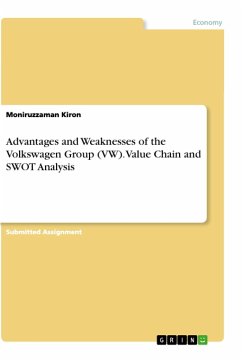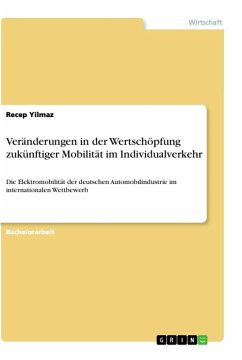Research Paper (undergraduate) from the year 2016 in the subject Business economics - Industrial Management, grade: 3,7 (93%), California State University, Fullerton, language: English, abstract: The paper analysis the automotive industry in general as well as the relative position of the Volkswagen AG. Furthermore, VW's competitors are assessed and recommendations for actions are formulated. In the beginning the creation of the automobile seemed less of a need and more of a luxury, as the cars could only be afforded by the well off. The very first steam car took to the road in France in 1768 - but Cugnot's novel idea did not trigger the beginning of the car industry. After Henry Ford's model made its debut, owning a car was a symbol of status, because it could only be afforded by the wealthy. Once the process of Henry Ford's mass production was introduced, cars could be afforded by a wider dynamic of people, and ownership became an affordable growing trend. The production of automobiles was a great help to the economy. It provided jobs across industries including positions in steel and machine tool makers for the different metal parts of the car. The increase in the need of supplies and other parts of the car including the battery, head lights, paint, and interior upholstery, were the driving forces for new businesses to thrive. Cars being a part of the everyday norm meant they would need routine car maintenance which became a major source of business. This also led to the increase of petroleum sales as the demanded use of cars increased. When WWII came the US was able to use the jeep for military use, additionally Chrysler reworked the jeep design to create tanks. Moreover, car production in Europe turned its focus from "the people's car" to cars designed for the military.








